
Toni Morrison’s 1987 novel, ‘Beloved,’ stands as a monumental work of American literature, delving into the harrowing aftermath of slavery and its indelible psychological scars. Set in the period following the American Civil War, the narrative unfolds through the experiences of a dysfunctional family of former slaves whose Cincinnati home is haunted by a malevolent spirit. The novel’s profound exploration of memory, trauma, and identity earned it the Pulitzer Prize for Fiction a year after its publication, solidifying its place as a literary masterpiece. It was also a finalist for the 1987 National Book Award and later ranked by The New York Times as the best work of American fiction from 1981 to 2006.
Morrison’s meticulous research and profound empathy bring to life a story that resonates with historical accuracy and emotional depth. The novel’s dedication, “Sixty Million and more,” starkly reminds readers of the countless Africans and their descendants lost to the Atlantic slave trade, underscoring the vast human cost. This powerful tribute, coupled with an epigraph from Romans 9:25, immediately sets a somber and reflective tone for the narrative, preparing the reader for a journey into the darkest corners of human experience and resilience.
As we embark on a comprehensive examination of this seminal work, we will unravel the layers of its intricate plot, explore the deeply etched psyches of its major characters, and understand the historical inspirations that shaped its narrative. This in-depth look aims to illuminate why ‘Beloved’ continues to be a crucial text for understanding the legacy of slavery and the enduring power of the human spirit in the face of unimaginable suffering, beginning with the very foundations upon which this powerful story was built.

1. **Background and Historical Inspiration**The genesis of ‘Beloved’ is rooted in a real-life tragedy, drawing its main inspiration from the life of Margaret Garner. Garner, an enslaved woman in Kentucky, escaped to the free state of Ohio in 1856, only to be pursued under the Fugitive Slave Act of 1850. In a desperate act to spare her children from the horrors of re-enslavement, she attempted to kill them, succeeding with her youngest daughter, when U.S. marshals broke into their cabin. This heartbreaking historical account provides the moral and emotional core for Morrison’s narrative.
Morrison’s primary source for this inspiration was an 1856 newspaper article titled “A Visit to the Slave Mother who Killed Her Child.” This article, initially published in the American Baptist, was later reproduced in ‘The Black Book,’ an anthology of texts of Black history and culture that Morrison herself had edited in 1974. This direct connection to historical documents emphasizes Morrison’s commitment to giving voice to overlooked and suppressed narratives from the era of slavery.
The novel’s dedication, reading “Sixty Million and more,” serves as a stark memorial to the countless Africans and their descendants who perished as a result of the Atlantic slave trade. This powerful statistic foregrounds the immense human tragedy that underpins the entire narrative. Furthermore, the book’s epigraph, drawn from Romans 9:25 of the King James Bible, states: “I will call them my people, which were not my people; and her beloved, which was not beloved,” immediately hinting at themes of identity, belonging, and the profound longing for recognition that permeates the story.
Read more about: Devon Walker’s Candid Departure: Unpacking the ‘Toxic’ Dynamics and Looming Shake-Up at Saturday Night Live
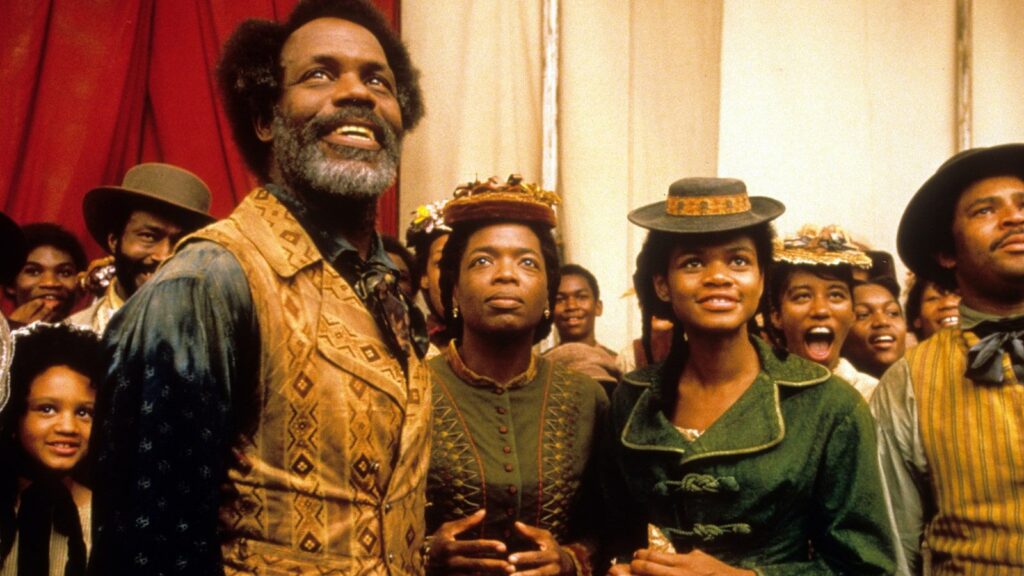
2. **Plot Summary: The Unfolding of Trauma at 124 Bluestone Road**’Beloved’ commences in 1873 in Cincinnati, Ohio, introducing us to Sethe, a formerly enslaved woman, and her 18-year-old daughter, Denver, residing at 124 Bluestone Road. Their home has been haunted for years by what they believe is the ghost of Sethe’s eldest daughter, a presence so powerful it drove away Sethe’s two sons, Howard and Buglar, by the age of 13. This opening sets a pervasive atmosphere of unease and isolation, highlighting the lasting impact of past trauma on the present.
Adding to the household’s sorrow, Baby Suggs, Sethe’s mother-in-law, died eight years prior to the novel’s beginning, soon after the boys’ departure. Her absence leaves a void in the family, contributing to Denver’s shyness, friendlessness, and housebound existence. The narrative takes a significant turn with the unexpected arrival of Paul D, one of the enslaved men from Sweet Home, the plantation where Sethe, Halle, Baby Suggs, and others were once held captive.
Paul D’s presence initially brings a flicker of hope and a forceful disruption to the haunting; he manages to drive out the malevolent spirit, much to Denver’s resentment, as she sees it as losing her only companion. He persuades Sethe and Denver to venture out for the first time in years to a carnival, a brief moment of normalcy. However, upon their return, they discover a mysterious young woman sitting on their doorstep, who introduces herself simply as Beloved, initiating a chain of events that will irrevocably alter their lives and force a confrontation with their repressed pasts.
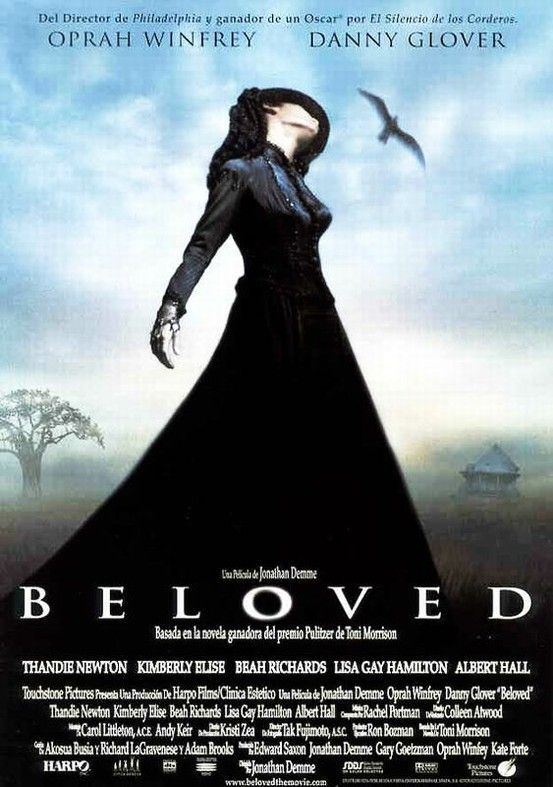
3. **Sethe: The Protagonist Forged by Sweet Home’s Scars**Sethe is the undisputed protagonist of ‘Beloved,’ a woman defined by her harrowing escape from the Sweet Home plantation and the unfathomable choices she made to protect her children. Her maternal instinct is presented as a dangerous, all-consuming passion, born from the brutal realities of slavery where mothers had no rights over their own offspring. This fierce protectiveness, however, leads to tragic consequences, shaping the course of her life in freedom.
Her body bears the physical evidence of her suffering: “a tree on her back,” scars from being whipped, a constant reminder of the physical and psychological torture she endured. These scars are not just physical marks but deeply ingrained symbols of the trauma that continues to influence her decisions and perceptions. Sethe’s resilience is undeniable, yet it is inextricably linked to her traumatic past, creating a complex character who constantly grapples with the ghosts of what she survived.
Sethe’s internal struggle is a central pillar of the novel. She is a mother who will stop at nothing to shield her children from the abuses she experienced, even believing that killing them was a merciful act to spare them from re-enslavement. Her character, born in 1836 and 19 when Denver was born, is a testament to the profound and often contradictory nature of love and survival in a world that sought to dehumanize her. She lives with the weight of her history, attempting to find peace while constantly being pulled back by “rememory” of Sweet Home and the desperate act she committed.

4. **Beloved: The Enigmatic Manifestation of Unresolved Trauma**Beloved’s arrival at 124 Bluestone Road is shrouded in mystery, emerging soaking wet from a body of water and appearing on the doorstep just as Sethe, Paul D, and Denver return from the fair. Her sudden presence is immediately impactful, as the haunting of the house, believed to be by Sethe’s murdered infant, ceases upon her arrival. This suggests a powerful, almost supernatural, connection between the enigmatic young woman and the unresolved pain of the household.
She exhibits childlike behaviors, further fueling the belief among readers and characters that she is indeed the spirit of Sethe’s murdered daughter, returned in corporeal form. Toni Morrison herself affirmed that the character Beloved is the daughter Sethe killed, clarifying the central mystery of her identity. The name “Beloved” itself is derived from the single word Sethe could afford to have engraved on her infant’s tombstone, a poignant detail that underscores the tragic circumstances of her death.
As the narrative progresses, Beloved becomes much more than a ghost; she acts as a powerful catalyst, forcing the repressed traumas of the family – particularly Sethe – to the surface. Her presence initially brings joy to Sethe, who sees it as an opportunity for redemption and a chance to recreate her lost family. However, Beloved quickly grows angry and demanding, consuming Sethe’s life, driving her to spend all her time and money trying to appease her. Her increasing size and eventually taking the form of a pregnant woman symbolize the growing weight of the past and the way unresolved trauma can deplete and overwhelm those who carry it.

5. **Paul D: The Endurance and Fragility of Manhood**Paul D, one of the enslaved men from Sweet Home, carries a deeply scarred past, marked by both the physical and psychological brutality of slavery and his subsequent experiences in a chain gang. He is one of several enslaved men at Sweet Home who bore the name Paul, a detail that subtly highlights the dehumanizing practice of assigning generic labels to reduce individuality. His journey is one of continuous movement, seeking to escape the haunting memories until he reunites with Sethe.
Central to Paul D’s character is the metaphor of his “tobacco tin” heart, in which he attempts to contain and suppress his most painful memories. This internal mechanism of repression is a common coping strategy among former slaves, but one that ultimately prevents true healing. Beloved’s arrival, however, acts as a key that unlocks this tin, forcing Paul D to confront the horrific experiences he had tried to bury, including the sexual violence inflicted upon him and other men in the chain gang.
Upon reuniting with Sethe, Paul D begins a romantic relationship, attempting to build a new life. He demonstrates a fatherly concern for Denver and is the first to express suspicion about Beloved’s true nature, sensing a malevolent force. Despite their shared past at Sweet Home, he struggles to fully comprehend the intensity of Sethe’s “thick love” – her radical actions driven by maternal protectiveness – and the deep-seated trauma that defines her. His journey in the novel is a painful exploration of what it means to reclaim manhood and find love in the shadow of an unspeakable past.
6. **Denver: The Journey from Isolation to Self-Actualization**Denver, Sethe’s only surviving child who remains at 124 Bluestone Road, begins the novel as a deeply isolated and housebound figure. Having been cut off from the Black community due to the infanticide and the subsequent envy directed at Baby Suggs, she forms an intense, almost exclusive, bond with her mother. Her world is small, confined to the haunted house and the specter of her dead sister, whom she initially believes to be Beloved upon her arrival.
Her relationship with Beloved initially offers a sense of companionship, and she becomes eager to care for the sickly young woman, believing her to be her elder sister returned. However, as Beloved’s presence grows more demanding and consuming, particularly of Sethe, Denver’s perspective shifts. She begins to fear Sethe, having understood her mother’s desperate act of killing Beloved, a fear shared by her brothers who fled the house because of it.
Denver’s character undergoes a significant transformation throughout the novel, evolving from a childish, dependent figure into a protective and independent woman. Recognizing the destructive cycle Beloved and Sethe are trapped in, Denver bravely breaks her long-standing isolation. She reaches out to the wider Black community for help, ultimately fighting not only for her personal independence but also for her mother’s wellbeing, thereby breaking the cycle of emotional and social isolation that has defined 124 Bluestone Road for years.

7. **Baby Suggs: The Unfulfilled Promise of a Community Matriarch**Baby Suggs, Sethe’s mother-in-law, is a figure of immense spiritual power and community leadership whose story tragically ends in retreat and disillusionment. Her freedom was painstakingly bought by her son Halle, a profound act of love and sacrifice. After gaining her freedom, she relocated to Cincinnati and quickly established herself as a revered leader, preaching a message of radical self-love to the Black community, urging them to love themselves “because other people will not.”
Her gatherings in the “Clearing” were powerful spiritual events, offering solace and strength to a people battered by generations of oppression. However, her standing in the community began to sour due to a combination of factors. Envy arose after she turned some humble food into a feast, perceived by some as an act of excessive privilege. This resentment was compounded by the horror and judgment that followed Sethe’s act of infanticide, which further isolated the family.
Overwhelmed by the community’s judgment, the weight of her past losses, and the ongoing suffering, Baby Suggs retired to her bed, choosing to spend her remaining eight years before the novel’s opening contemplating only “pretty colors.” Her withdrawal signifies the profound impact of collective trauma and the difficulty of maintaining hope and community spirit in the face of such deep-seated pain. She dies at 70 at the beginning of the book, leaving behind a legacy of both inspiring strength and ultimately, a quiet, sorrowful capitulation.
Following the intricate foundations laid by its genesis and core narrative, Toni Morrison’s ‘Beloved’ unfurls a tapestry of profound thematic depths and enduring societal impact. The novel transcends a mere recounting of events, instead offering a rigorous exploration of complex human experiences shaped by the brutal institution of slavery. This section will meticulously analyze the major themes woven throughout the narrative, examining how Morrison dissects the intricacies of human relationships, identity, and the lingering echoes of trauma, before considering the novel’s significant adaptations, its critical reception, and the controversies that have, at times, shadowed its literary journey.
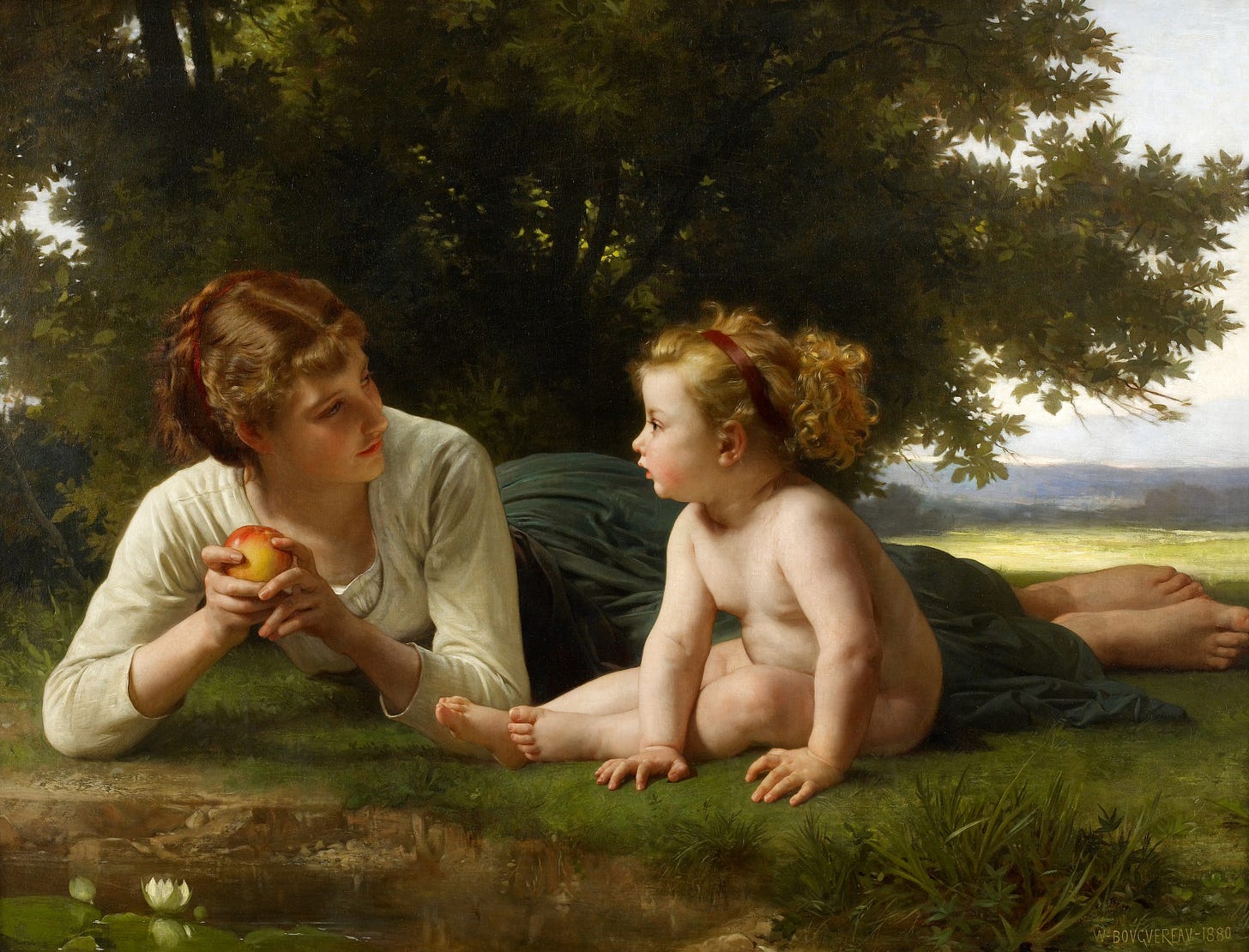
8. **Major Theme: Mother-Daughter Relationships**The maternal bonds between Sethe and her children form a central, often tragically complex, theme in ‘Beloved,’ deeply impacting Sethe’s sense of self and preventing her individuation. Morrison presents Sethe’s maternal instinct as a dangerous, all-consuming passion, forged in the crucible of slavery where mothers were denied ownership of their own offspring. This fierce protectiveness ultimately leads to the heartbreaking act of infanticide, which Sethe viewed as a merciful choice to spare her child from the horrors of re-enslavement, an action she considers her “best self.”
Sethe’s traumatic past, particularly the theft of her milk while enslaved, profoundly affects her ability to form a symbolic bond with her children through feeding, further complicating these relationships. Her intense, radical love contrasts sharply with Baby Suggs’ approach, who, having suffered numerous losses of her own children to slavery, chose to refuse deep emotional closeness as a coping mechanism. This divergence highlights the varied, often devastating, ways enslaved women tried to navigate their maternal roles in an inhumane system.
The novel also portrays Denver’s journey, initially estranged from the Black community and heavily reliant on her mother, as a path towards individuation. It is with Beloved’s presence that Denver is ultimately spurred to seek interaction with the community and embrace womanhood. For Sethe, true individuation, and the ability to accept a relationship “completely for her” with Paul D, only becomes possible after the exorcism of Beloved, signifying a release from the self-destructive cycle fueled by her intense maternal guilt and trauma.
Read more about: The Royal-Style Wedding America’s Been Waiting For: Taylor Swift and Travis Kelce’s Engagement Ignites a Global Frenzy
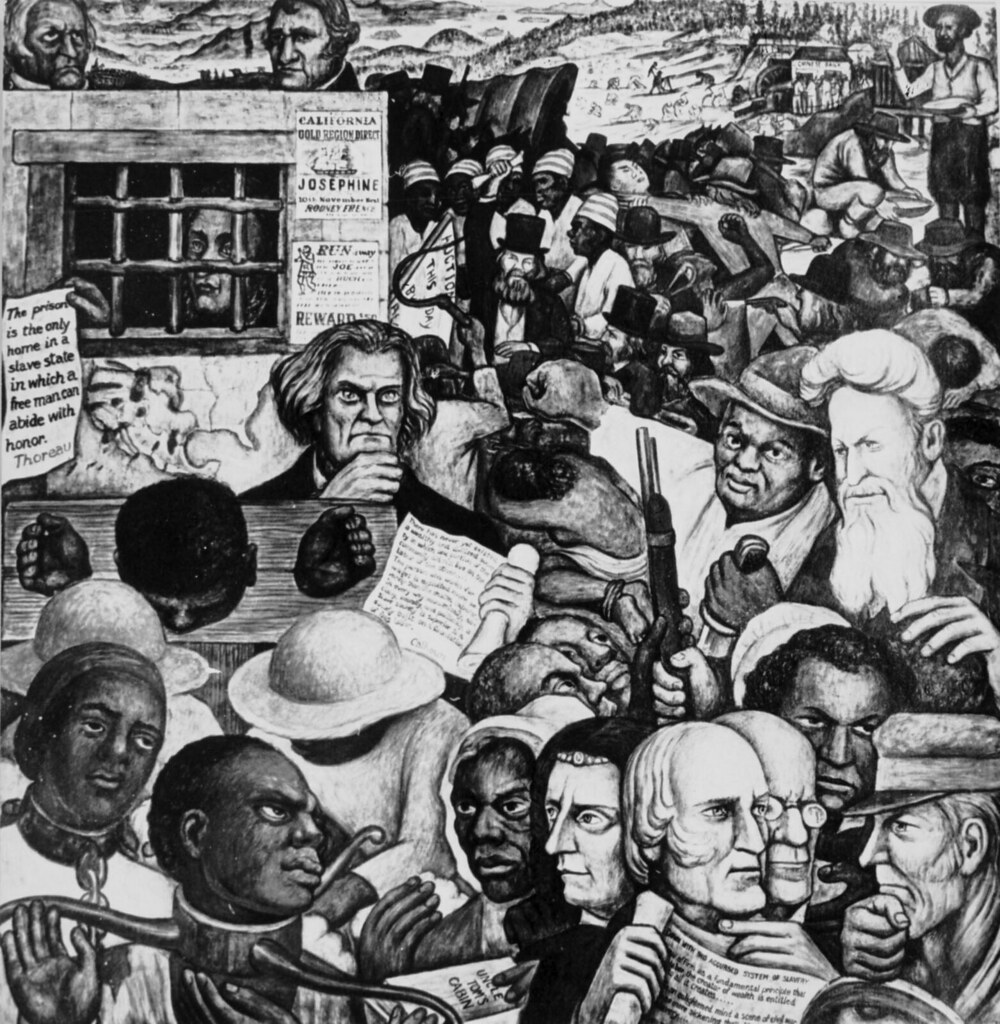
9. **Major Theme: Psychological Effects of Slavery**The psychological effects of slavery are meticulously explored, portraying a pervasive landscape where former slaves attempted to repress painful memories as a means of survival. This repression and dissociation from the past inevitably led to a fragmentation of the self and a profound loss of true identity for characters like Sethe, Paul D, and Denver. The narrative suggests that their wholeness could only be restored through a reconciliation with these buried pasts and earlier identities.
Beloved’s enigmatic arrival serves as a powerful catalyst for this process, forcing the characters to confront their deeply repressed memories. Slavery, as depicted, fragments an individual, creating a “self that is no self” – an identity composed of denied, unspeakable pasts. To truly heal and humanize, the novel implies, one must articulate these painful events, reorganize them into a coherent narrative, and retell these memories, thereby acknowledging and integrating the fragmented self.
The challenge for all characters in ‘Beloved’ lies in confronting this “unmade self,” defined by “rememories” and external perceptions. Their struggle to remake themselves is often hindered by a longing for an “uncomplicated past” and a profound fear that remembering might lead them to “a place they couldn’t get back from.” This psychological barrier underscores the immense difficulty of achieving true healing and self-realization in the wake of such dehumanizing experiences.

10. **Major Theme: Definition of Manhood**’Beloved’ delves deeply into the theme of manhood and masculinity, particularly how the horrors of enslavement distorted a man’s sense of self. Morrison uses stylistic devices to accurately depict the brutal effects of slavery, communicating the moral dimensions of manhood within this context. The narrative reveals varying pathways to understanding manhood, especially as influenced by the legacy of slavery.
Paul D’s internal struggles provide a vivid illustration of this theme. Morrison deliberately inserts his “half-formed words and thoughts” to offer readers insight into his mind, revealing a perception of manhood constantly challenged by the norms and values of white culture. His reduced manhood emerges in relation to a discourse of animality, reflecting the dehumanization inherent in slavery. Paul D’s dreams and goals, though high, were unattainable due to systemic racism, as he believed his sacrifices entitled him to societal reciprocation.
The novel further contextualizes this through Stamp Paid’s observation of Paul D, sitting on a church step, “stripped of the very maleness that enables him to caress and love the wounded Sethe.” This image of Paul D repeatedly sitting on a foundation – a tree stub, steps – symbolizes his place in society: a foundation through hard labor for white profit, yet deemed “lower-status.” This echoes the challenges faced by Black men during the Reconstruction era and under Jim Crow laws, as they struggled to establish identity and achieve goals despite pervasive limitations.

11. **Major Theme: Family Relationships**Family relationships are an instrumental element in ‘Beloved,’ serving to visualize the profound stress and dismantlement of African-American families during and after slavery. The brutal system of slavery stripped African Americans of their basic rights, including control over themselves, their belongings, and most devastatingly, their own children. This systemic oppression created an environment where families were constantly threatened with separation and destruction.
Sethe’s harrowing decision to kill her daughter, Beloved, is presented within this context as a desperate, tragic attempt at a “peaceful act”—a belief that killing her child was saving her from the unspeakable horrors of re-enslavement. This act, however, irrevocably divides and fragments her family, mirroring the broader societal breaking and bruising of formerly enslaved families even after the Emancipation Proclamation. These families, having endured immense hardships, often turned to the supernatural for faith and trust, lacking avenues for participation in broader societal events.
In the novel, the spectral presence of Beloved, who haunts Sethe, vividly displays how fractured family relationships are used to externalize the mental strife the protagonist faces. Sethe’s belief that the mysterious young woman is her murdered daughter, grown and alive, allows her to overlook the immense pain of the infanticide. This scenario underscores the protagonist’s internal struggle and the pervasive way the past continues to influence, and sometimes distort, the present family dynamic.
Read more about: The Royal-Style Wedding America’s Been Waiting For: Taylor Swift and Travis Kelce’s Engagement Ignites a Global Frenzy
12. **Major Theme: Pain**The theme of pain in ‘Beloved’ is depicted as universal, a pervasive consequence that left all individuals touched by slavery heavily scarred, whether physically, mentally, sociologically, or psychologically. Morrison explores how some characters, in their struggle to cope, tend to “romanticize” or beautify their pain, viewing each experience as a significant turning point in their lives, a concept rooted in early Christian contemplative tradition and African-American blues tradition.
Sethe, for instance, repeatedly recounts a white girl’s description of her whipped back scars as “a Choke-cherry tree. Trunk, branches, and even leaves.” She shares this image with others, suggesting an attempt to find beauty or meaning in the very marks that signify her extreme suffering, even as Paul D and Baby Suggs recoil in disgust, denying this poetic interpretation of her trauma. This highlights her complex coping mechanism, trying to transform pain into something less horrifying.
Similarly, Sethe applies this mechanism to Beloved. She embraces the belief that the mysterious young woman is her murdered daughter, fully grown and alive, effectively choosing to see this manifestation over the excruciating pain of the original act of infanticide. A home, traditionally a place of vulnerability and emotional connection, becomes a site of intense, uninvited pain. While Paul D and Baby Suggs intuitively reject Beloved’s presence, Sethe clings to her, finding solace in the perceived reunion. Ultimately, with Beloved gone, Paul D encourages Sethe to embrace self-love, a stark contrast to her previous identification with her “best thing” being her lost child, prompting her to question her own intrinsic worth.
Read more about: Consumer Alert: 15 Vehicles Mechanics Say You Must Avoid for Reliable, Worry-Free Driving
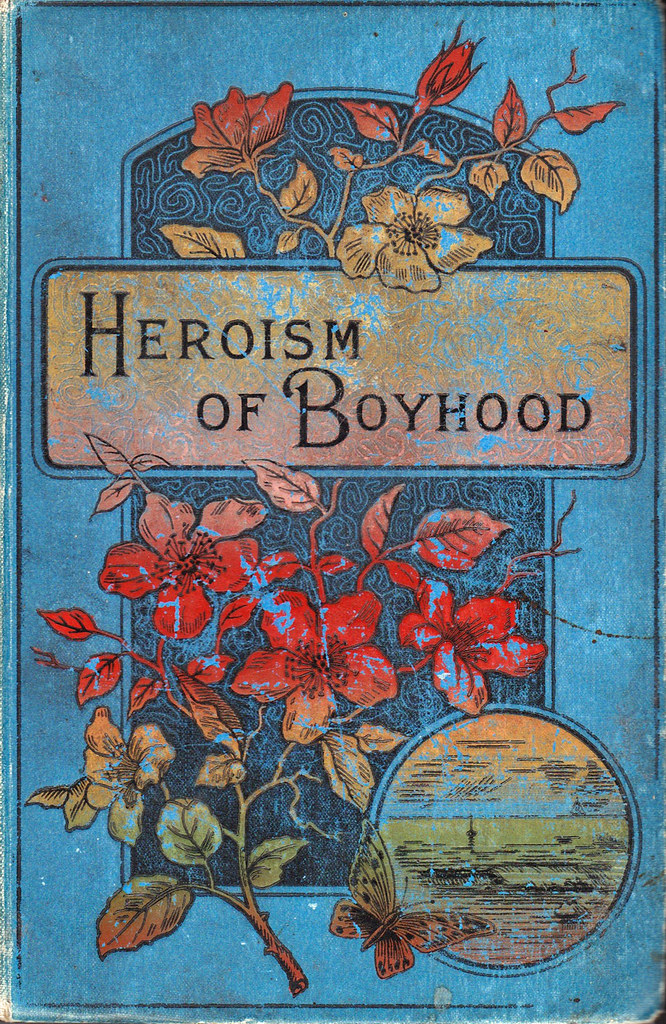
13. **Major Theme: Heroism**Heroism in ‘Beloved’ is presented not as an absolute ideal, but as a concept relative to individual past experiences and the influence of community, defined by the ability to act on one’s convictions in the face of opposition and to inspire others to overcome their past pain. The literary characterization of both Sethe and Denver serves to powerfully support this nuanced definition of heroism within the narrative.
Sethe is portrayed not as a conventional hero, but as an individual whose actions, however controversial, are driven by an unwavering resolve to protect her loved ones from the shackles of the past. Her decision to kill Beloved, scorned by the community despite her fear of Schoolteacher’s return to re-enslave her family, is fiercely justified by Sethe herself: “It ain’t my job to know what’s worse. It’s my job to know what is and to keep them away from what I know is terrible. I did that.” She prioritizes her perceived role of ultimate protection over societal judgment, believing death preferable to the anguish of slavery.
Sethe also demonstrates a quiet heroism by helping Paul D confront his own painful past. By never mentioning or looking at the “neck jewelry” scars he carries from the iron bit, she allows him to retain his manhood, a fundamental aspect of his character. Meanwhile, Denver’s heroism blossoms as she defies her deep-seated isolation. Recognizing the destructive cycle between Sethe and Beloved, Denver courageously steps “off the edge of the world” by leaving 124 to seek help from the community. This act, inspired by her desire for her mother’s well-being and a future beyond Beloved’s grasp, liberates Sethe from the past’s suppressive grip. Denver’s actions ultimately inspire Ella to gather a group of women, their collective voices in the Clearing, described as a “wave of sound,” breaking the back of words and cleansing Sethe of Beloved’s taint, echoing Baby Suggs’ earlier role as a community matriarch. Morrison thus emphasizes that heroism resides in the courageous intent to overcome societal preconceptions for the greater good.

14. **Other Major Characters: Halle, Schoolteacher, and Amy Denver**Beyond the central figures, ‘Beloved’ enriches its narrative through the portrayal of other pivotal characters who embody different facets of the era’s suffering and resilience. Halle, Sethe’s husband and Baby Suggs’ son, is a figure primarily remembered through flashbacks. His profound love for his mother is demonstrated by his tireless efforts to buy her freedom, a significant act of sacrifice. He and Sethe were married at Sweet Home, but their bond was tragically severed during Sethe’s escape. Paul D was the last to see Halle, churning butter at Sweet Home, and he is presumed to have descended into madness after witnessing the horrific violation of Sethe by Sweet Home residents, an event that fundamentally broke him. Baby Suggs, with prescient insight, feared that Halle’s inherent goodness and hardworking nature made him an inevitable target for the cruelty of slavery.
Schoolteacher represents the epitome of institutionalized brutality and dehumanization inherent in slavery. As the manager of Sweet Home, he is depicted as the primary discipliner, characterized by his violence, abuse, and cruelty towards the enslaved individuals under his control, whom he fundamentally viewed as animals. His relentless pursuit of Sethe following her escape is the direct catalyst for her desperate act of infanticide. His arrival at 124 Bluestone Road, seeking to reclaim Sethe and her children, ignites her primal fear and leads to the tragic killing of her eldest daughter, cementing his role as a symbol of the oppressive system Sethe sought to escape.
In contrast to the horrors embodied by Schoolteacher, Amy Denver emerges as a surprising figure of compassion and aid. She is a young white girl whom Sethe encounters in her desperate flight to freedom after escaping Sweet Home. At the time, Sethe is heavily pregnant, and her feet are severely injured and bleeding from the arduous journey. Amy, who is on her own journey to Boston, provides crucial assistance, nurturing Sethe and, perhaps most significantly, helping her deliver her daughter in a small boat. In a poignant act of gratitude and remembrance, Sethe names her newborn child Denver after this unexpected rescuer, forever linking her daughter’s identity to this moment of unlikely inter-racial kindness amidst overwhelming cruelty.
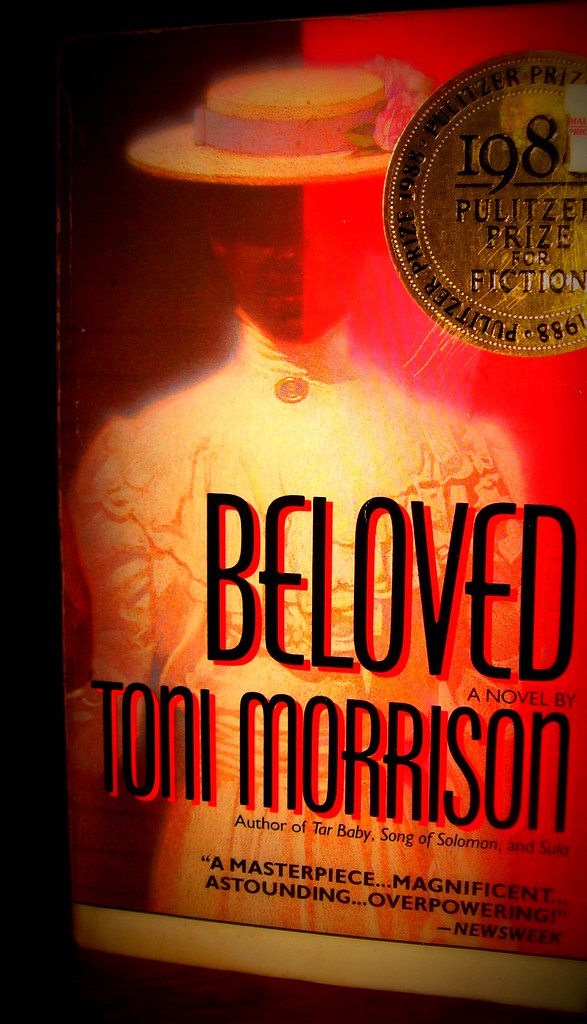
15. **Adaptations, Critical Reception, and Legacy**The profound impact and enduring relevance of ‘Beloved’ have led to significant adaptations across different media, further cementing its place in cultural discourse. In 1998, the novel was brought to the big screen in a film directed by Jonathan Demme, which notably starred and was produced by Oprah Winfrey, bringing the harrowing story to a wider audience. More recently, in January 2016, BBC Radio 4 broadcast an adaptation of ‘Beloved’ in 10 episodes as part of its ’15 Minute Drama’ programme, adapted by Patricia Cumper, demonstrating its adaptability and continued resonance in different narrative forms.
The novel has been lauded with numerous prestigious awards and accolades, underscoring its literary significance. It received the Pulitzer Prize for Fiction a year after its 1987 publication and was a finalist for the National Book Award in the same year. ‘Beloved’ was also honored with the Frederic G. Melcher Book Award, which, inspired by Morrison’s acceptance speech highlighting the lack of memorials for enslaved Africans, led to the installation of ‘benches by the road’ at significant slavery sites across America. It also received the Robert F. Kennedy Center for Justice and Human Rights Book Award, recognized for its powerful reflection of Robert Kennedy’s concerns for the marginalized. The novel’s provocative epigraph, “Sixty Million and more,” referring to the countless Africans lost to the slave trade, has been a subject of critical discussion, as has the enigmatic nature of the character Beloved herself, with scholars debating whether she is a literal ghost or a physical manifestation of repressed trauma and mistaken identity.
The critical reception following the publication of ‘Beloved’ was overwhelmingly positive, although it initially sparked controversy, particularly when 48 African-American writers and critics signed a letter of protest after it did not win the National Book Award. Subsequently, the novel garnered widespread acclaim for its exploration of family, trauma, memory, and its role in restoring the historical record of African Americans. Critics and Morrison herself emphasized its role in giving voice to collective memory. The critical discourse has evolved, moving from initial interpretations focusing on the supernatural aspects to deeper psychoanalytic and historical analyses of trauma and identity. Morrison’s focus on African-American experience and history within isolated Black communities, where African practices remain active forces, has been a strong point of academic interest, highlighting how her fiction engages with specific historical moments and seeks to memorialize forgotten aspects of Black history.
Despite its critical success, ‘Beloved’ has faced significant controversies, notably its banning in numerous U.S. schools due to content concerns regarding “bestiality, infanticide, sex, and violence.” A prominent instance occurred in 2007 at Eastern High School in Louisville, Kentucky, where the book was abruptly banned from an AP English class before the ban was successfully overturned. In Virginia, parental concerns about the novel’s content inspired the “Beloved Bill,” legislation that aimed to require schools to notify parents of “sexually explicit content” and offer alternative assignments. This bill was vetoed by Governor Terry McAuliffe, whose stance on parental involvement in curriculum decisions became a significant issue in the 2021 gubernatorial election. Nevertheless, ‘Beloved’ continues to be recognized for its profound literary merit and cultural importance, being listed by BBC News among the “100 most inspiring novels,” attesting to its enduring power to challenge, inform, and inspire.
Read more about: Le Manoir du Diable: Unveiling the Cinematic Genesis of Horror with Georges Méliès’ Masterpiece
Toni Morrison’s ‘Beloved’ stands as a lighthouse in the turbulent seas of American history, continually illuminating the profound and often devastating legacy of slavery through its masterful narrative and complex characters. From the harrowing depths of individual psychological trauma to the resilient bonds of community and family, the novel meticulously unravels the human cost of an unspeakable past. Its unwavering commitment to giving voice to the voiceless, coupled with its unflinching exploration of pain, love, and the very definition of humanity, ensures its place not just as a literary masterpiece, but as an indispensable text for understanding the persistent echoes of history. As we reflect on its intricate themes, powerful characters, and the lasting impact it has had on literature and society, ‘Beloved’ urges us to confront uncomfortable truths, to remember, and ultimately, to embrace the enduring strength of the human spirit in the face of unimaginable adversity.





